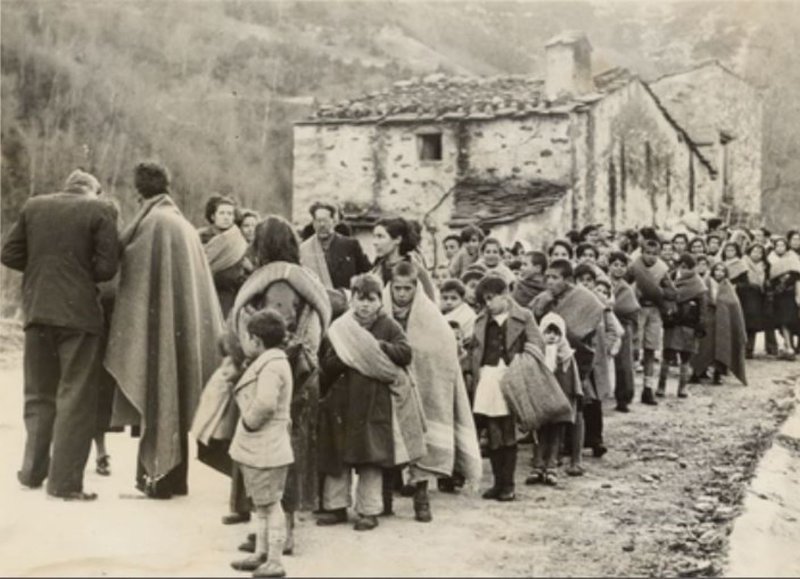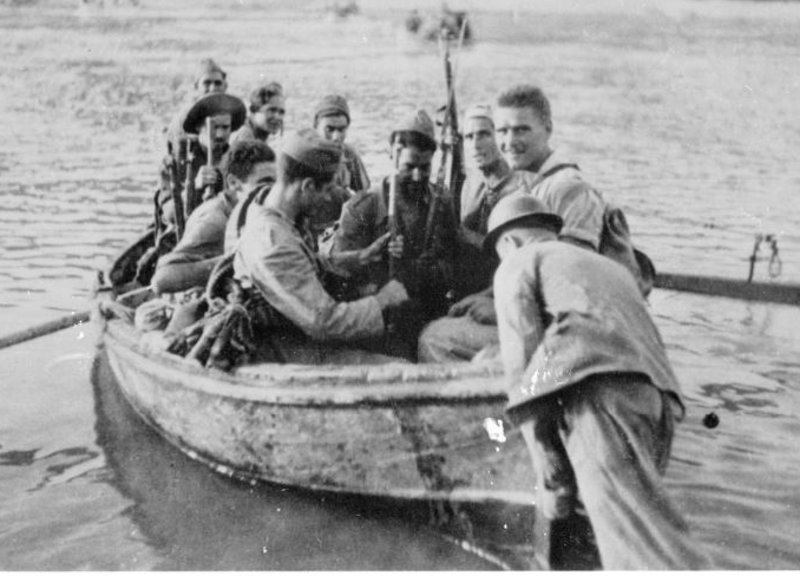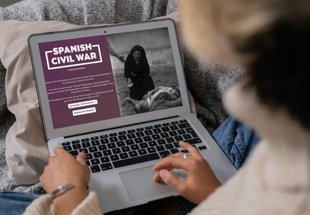Virtual Civil War
An international team of historians, archaeologists, experts in the humanities and academics has created the first Virtual Museum of the Spanish Civil War
You can visit it, but not in person. An international team of historians, archaeologists, humanities experts and academics has created the first Virtual Museum of the Spanish Civil War. Financed by Canadian research funds, the virtual museum aims to make up for the lack of a physical institution and explain the conflict that split Spanish society between 1936 and 1939.
“Seeing this absence, we thought that a way to make up for it was to create a virtual museum, but always with the idea that hopefully one day we will be able to have a physical museum,” says Joan Maria Thomàs, professor of contemporary history at the Rovira i Virgili University (URV), an expert in fascism and the history of the Falange movement, and co-founder of the initiative together with fellow professors Adrian Shubert (York University, Canada) and Antonio Cazorla-Sánchez (Trent University, Canada).
“We have a bunch of small museums, some of which are very good, like the Exile Memorial Museum in La Jonquera, or the sites of the Battle of the Ebre,” says Thomàs, who adds that none have a global perspective: “I think it’s the result of a memory problem in this country. There are two major memories: the democratic memory, which comes from the losing side of the war, and the memory of the victors. But there are also hundreds of thousands of family memories; everyone has their own.”
And the professor points out that these two memories clash: “Every time there’s an event, for example, the removal of Franco’s remains from the Valley of the Fallen or the approval of the historical memory law, it causes the two memories to clash. But things do not have to be this way.”
Thomàs believes the time has come for a public initiative to create an historical narrative that looks at the war for what it really was : “We must put on the table how much we have progressed as historians in the past 40 years of democracy and the first-rate research on the war. I think we’re in a position to take on a discourse that is feasible.”
However, the historian is aware that “there’s still fear and reluctance about this,” and Thomàs thinks that if a major museum about the war does not exist, it is because “it raises problems of memory, and politicians, or certain politicians, do not want to address them.” The historian adds that “from a scientific and academic point of view, these are issues that can be dealt with, and we address them every day in class, without conflicting narratives, but rather talking scientifically and academically about what the war was.”
The virtual museum is in the form of a gallery. Free to access, for the moment it consists of 130 images grouped in five galleries along with informative texts written by specialists that explain how the military conflict developed, the situation experienced in the rear, the impact of the war on the wider world, and its effects on normal people’s lives. Along with the three academics mentioned above, the archaeologist and CSIC professor Alfredo González Ruibal and the professor of Cultural Studies at Warwick University (England) Alison Ribeiro de Menezes are also part of the team, with the technical support of Andrea Davis, professor at Arkansas State University and the expert librarian in digital humanities Dwayne Collins (Trent).
Over 80 years since the end of the war, the conflict’s legacy makes it hard to move forward. “When the war ended, the Francoists made a memory policy for their dead. They put up a cross of their fallen in each town, they gave out pensions, they made it easier for supporters to get public positions... Some things were done with the advent of democracy, such as pensions for Republican soldiers, for widows, and so on, but the whole issue of mass graves was not addressed. All of this is still controversial and I really believe that it must be addressed,” says Thomàs.
It is not a problem exclusive to the Spanish Civil War: “In other places where there have been civil wars, opposing memories continue to clash. For example, in the US, if you go to the South, you will find statues of southern generals and slaveholders. There is now a movement against this, which until now has been accepted. These are not easy issues,” he says.
Future plans
The museum is only in its first phase. The plan is to add more texts, images, sound and film. The content is only available in English and Spanish but will soon include Catalan, Basque, Galician and French. “We will also address an issue that we consider very important: the educational aspect. We want the museum to be a resource for students and teachers of all levels. We want to create teaching materials that are accessible,” points out the URV professor, who hopes to receive new funds from both the Canadian and Spanish governments. “And who knows if what we have now can one day become the virtual part of a physical museum.” One of the most expensive tasks has been getting the permission to exhibit the images. “Here we had the help of the Spanish government and state archives, and there are also institutions from all over the world that have given us the right to use their content,” he explains.
The Virtual Museum of the Civil War is already working with other museums and memorial organisations in Spain and abroad, such as the Documentary Center of Historical Memory, the Catalan government’s Democratic Memorial institution and the Guernika Peace Museum, among others. “Working with Democratic Memorial will be very important because it has a database of audio and video recordings by witnesses of the Civil War and we will hopefully be able to to make them accessible through the museum. We aspire to create a network allowing easy access to high quality materials. You can find everything on the internet, but also crazy views and you can’t rely on them as sources. Our museum will be in the hands of specialists, which gives a guarantee,” says Thomàs, who is the author of numerous books on fascism and the Falange and is now about to publish his 12th, which will focus on in the figure of the minister and Falange leader, José Luis de Arrese.
feature history








